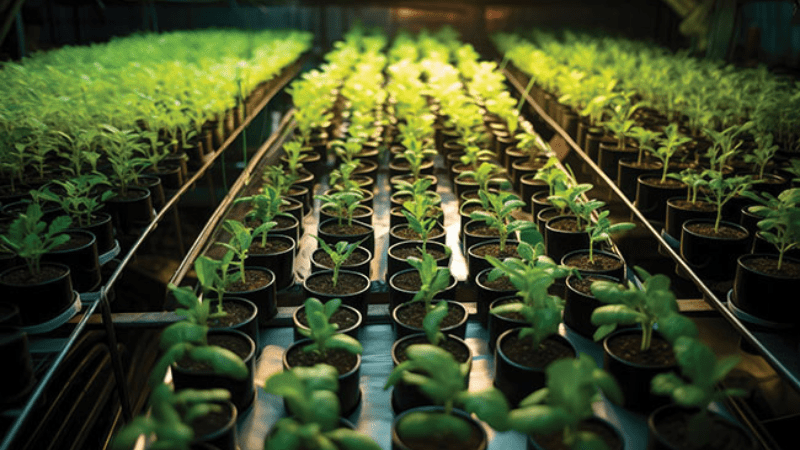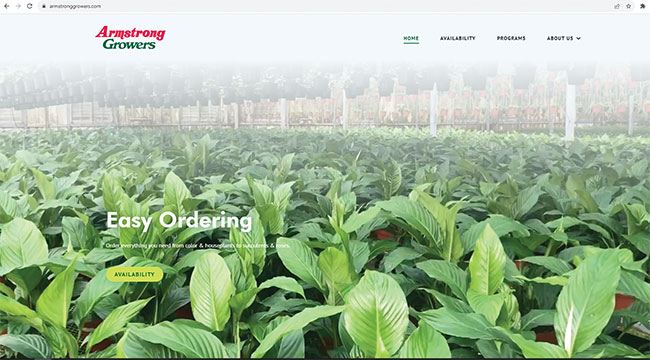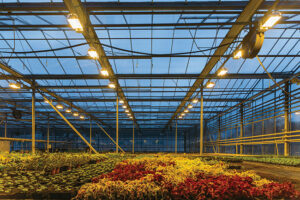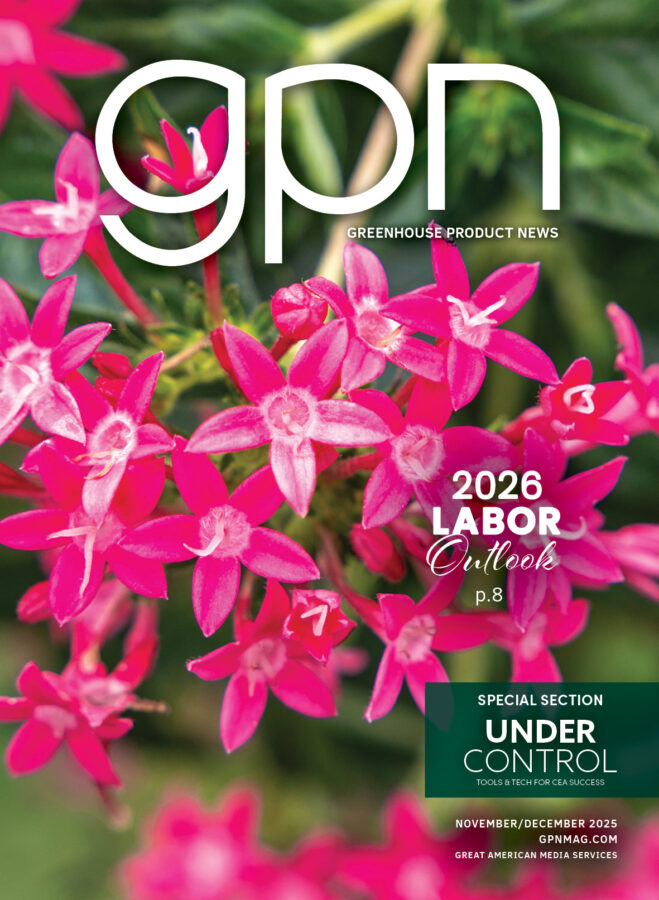
Shaping the future
Heading into 2024, greenhouse growers are poised to utilize more innovation than at almost any time during the last few decades, as AI is quickly transforming the industry.
AI is taking greenhouse management to a whole new level, as these smart systems are the equivalent of having a super knowledgeable gardening expert who knows exactly what to do for perfect plant growth.
“Think of AI systems like having a greenhouse genius on your team,” said Tom Su, founder of Lawn Edging Australia, known for his innovative and sustainable garden design solutions. “They control everything — temperature, humidity, light — and adapt it perfectly to the plants.”
Many greenhouse growers are turning to tech companies specializing in agricultural technology for advanced climate control systems — these are the firms that develop AI-driven software to fine-tune environmental conditions for optimal plant growth.
LIGHTING ADVANCEMENTS
But of course, it’s not just AI that is making a difference in the greenhouse. Industry insiders point to new advancements in the hydroponics and aquaponics scene, improvements in LED lights, which are more than just energy savers now, and a larger focus on sustainability and eco-friendly materials.
Erik Runkle, professor and floriculture Extension specialist at Michigan State University, noted adoption of LED lighting continues to be a major trend in the greenhouse industry.
“Growers are replacing inefficient high-pressure sodium lamps with LEDs, and some are installing lighting where they didn’t have it before,” he said. “Usually, the lighting is installed in zones used for propagation, but some are also installing it for crops after transplant when product is shipped early in the spring.”
In addition to LED fixtures, there is increasing interest in lighting controls. Companies are developing and marketing products that enable dynamic lighting — where on/off cycles aren’t simply controlled by timers.
“To maximize lighting and energy efficiency, efficient fixtures should operate based on the intensity of sunlight, target daily light integral, day length, electricity price and perhaps other factors,” Runkle said.

There is also interest in more futuristic technologies being developed, including the use of spectral-shifting films and transparent photovoltaics.
“While there are already some products on the market, more research, development and economic analysis is needed to advance these technologies,” Runkle said. Then there are drones and robots. They roam the area and do all kinds of efficient work, from checking the health of plants to picking ripe items.
“Many companies are creating automated systems for tasks like monitoring plant health, watering and even harvesting,” Su said. “It’s as if the future of gardening has already landed.”
Another hot topic is vertical farming within greenhouses. By growing plants in stacked layers, it maximizes space and efficiency; perfect for urban settings where space is at a premium. There’s also been a rise in unique designs that better allow greenhouses onto rooftops and other areas, which is also a big win for urban farming.
For integrated pest management, there are companies focusing on organic and biological pest control solutions, providing natural predators or organic treatments to manage pests in a sustainable way.
STRUCTURE AND SUSTAINABILITY
The future of structure and sustainability is shaping up to be quite an exciting landscape as well, with more greenhouses moving towards renewable energy sources like solar panels.
Water use efficiency is another key area. Innovations like recirculating irrigation systems, where water is reused and recycled, are becoming more common. This not only conserves water but also reduces the runoff of fertilizers, protecting the surrounding environment.
“For water efficiency, irrigation companies that offer drip irrigation systems and soil moisture sensors are key players,” Su said. “These systems ensure that water is delivered precisely where and when it’s needed, minimizing waste.”
WHAT’S NEW
SBI Software, a Portland, Oregon-based company, specializes in working with greenhouse growers.
“Part of the problems we have seen is that sometimes the back-end of the software can be pretty complex,” said Aaron Allison, a partner in the company. “There’s a higher turnover nowadays with people’s positions, so we’ve had more pressure to provide simpler solutions.”
For instance, in early 2024, the company will be releasing Sprout, a low-cost platform for smaller growers where they can log in, set up and start selling plants all at a much lower cost than a typical software sale. It will sync with Quickbooks Online and allow them the ability to do inventory, availability, orders, payments and credit card payments all with self-set-up.
SBI Software also offers an app for inventory control, and one of the newest versions has a Spanish version, which has been a big hit in the greenhouse space among growers. Another platform app from the company includes Flow App that allows them to create any customized workflow for any greenhouse, so they have data capture to push into the front office.
One greenhouse in Utah is using the company’s inventory genius on its flow app, and creates a to-do list, allowing others to execute on the tasks needed, checking off and updating inventory live on the app.
 Vostermans Ventilation, with U.S. operations in Bloomington, Illinois, continues to innovate with its greenhouse fans, knowing the importance of proper circulation and ventilation in greenhouses is often underestimated. The company’s newest Multifan V-FloFan equipment reduces humidity-related plant diseases and pests, and helps with more uniform plant growth, which simplifies business operations and increases energy savings.
Vostermans Ventilation, with U.S. operations in Bloomington, Illinois, continues to innovate with its greenhouse fans, knowing the importance of proper circulation and ventilation in greenhouses is often underestimated. The company’s newest Multifan V-FloFan equipment reduces humidity-related plant diseases and pests, and helps with more uniform plant growth, which simplifies business operations and increases energy savings.
All of this innovation is not just about increased growth; it’s about getting smarter and doing it in a way that’s better for the planet.
“Greenhouse gardening is undergoing a high-tech transformation, and it’s truly amazing,” Su said.









 Video Library
Video Library 


















